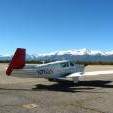Leaderboard
Popular Content
Showing content with the highest reputation on 04/20/2025 in all areas
-
This happened quite a while ago but it's only now that I'm willing to bring it up. I was flying my 77 J enroute from CYTZ to my home airport CYXL on Jan.31 2025. It was a 650nm flight over mostly remote part of Northern Ontario. Roughly three and half hour into the flight, about one hour from reaching my destination, in the vicinity of Nipigon Ontario, at a cruising altitude of 5500ft, the engine started to sputter. I immediately turned boost pump on and then my engine quit completely. I acted upon the situation as everyone would, I was lucky that there is a highway right below me, and I quickly turned my plane gliding alone the highway looking for a suitable landing spot. Then I tried to trouble shoot the problem, and declared mayday on both Center frequency (but I'm on the edge of their reception) and 126.7. Oil, fuel pressure were in the green. I had plenty of fuel. Propeller was windmilling, there is no oil spraying everywhere or any catastrophic failure. I even had fuel flow, though only 3-6 gph. But I had no power. Engine monitor show all four cylinder cold on EGT. I tried both mag, didn't switch tank because I already ran one dry, and determined I cannot bring the engine back. The subsequent landing on the highway is uneventful. Clipped two small roadsign during the landing roll, but I'm fine and the plane is now being repair in Toronto, after a temporary repair was carried out in the field and got a ferry permit from TC. The landing happened just before sunset, temperature at landing was -20c. If it would've happened ten minutes prior or later, I would've end up landing on a frozen lake. That was the only highway along my route for almost 300 miles. I think I got lucky here. After landing, I checked the oil, sitting exactly at 6 qts. I spun the prop and noticed smooth movement with no issue, and normal compression in all four cylinder. I then checked my fuel tank and I could see plenty of gas. The only thing abnormal, that I noticed, was when I turn on the boost pump there is a strong smell of fuel. During departure out of CYTZ, when I turn on the fuel point in the takeoff check, I also smelled a whif of gas but I did not thought to much about it. Shortly after, police, fire and ambulance arrived, though I do not require fire and ambulance (luckily I don't need to pay for ambulance). A snow plow came, plowed out a side road and move my plane there, where it sat for two month getting the wing patched up and a ferry permit issued from TC. A local float plane company sent a few mechanics and inspected the engine. They found the fuel line out of the engine driven pump to be loose at the connector, causing a very significant fuel leak. The reason why it is loose, according to the mechanics, is likely because the fuel line with fire sleeve over it was rubbing against the firewall, loosening it over time. Both mags are firing properly and sparks are produced on all 8 plugs. I'm not sure how much I believe this theory. Since during the flight, I ran the right tank dry, and my fuel accumulator read exactly 32 gallon used. The fuel flow transducer is located after the leak, so if there is any leak, I'd ran out of fuel before my fuel accumulator reaches 32. The mechanic in Toronto that usually worked on my plane said it might be due to some kind of icing issue inside the injector servo or controller or something like that, and the float plane mechanic did agree that it's also a possibility. He says I should not loose power completely if I still have fuel flow and green fuel pressure. To add, I did sump my tank in Toronto and noticed no water in fuel, and fuel cap o ring is fairly new. It was noted the boost pump was functioning properly providing proper pressure with no leaks. They removed the fire sleeve on that fuel line, reconnected the hose properly and ran the engine up, and it ran fine. So we eventually flew it out to toronto for permanant repair on the wing with a fueling stop in Thunder bay. Now the plane is sitting in my mechanic hangar in Toronto, I've asked my mechanic to thoroughly inspect the engine again, which I asked him to do last time when I was dealing with the prop governer fuel leak isssue. I'm really not sure how do I trust this plane again. For the past year that I've owned this airplane, I was always on the way of fixing something. The engine was looked into at least twice under my request to make sure the pervious owner's mechanic who installed the engine did not make any more mistake that's not yet discovered. Just sharing my experience here. I guess from now on I will use 1% alcohol added into the fuel to prevent icing. I'd love to hear everyone's thought's on this.13 points
-
I’m not a mechanic, but if I’m not mistaken, that tempest vacuum pump flange has a star/pointed shaped gasket that sits in the notched grooves that are centered on each side of the flange—rather than a traditional flange gasket. I bet there’s an issue with that gasket either missing or misaligned.4 points
-
Mooney used a lot of off the shelf parts. There is a note in the M20J IPC that the source for the convex mirror used with the wing-mounted taxi lights is K-Mart. If you are looking to replace the handle, since it is a standard part, I'd just find a cabinet handle that fits.3 points
-
We are an authorized reseller and installer of Surefly, and we’ve probably done about 12 of them at this point. No failures. We had trouble with one that somebody had installed before we connected with the client, it was a very early version 28 V. It would randomly stumble or shut off after flying for a while and I called them up and Just leveled with them and said send me a new unit so I can get this guy out the door and they did, and that was two years ago. He is still going fine. We had another one where It would not work, it wouldn’t power up to time properly. As it turns out, the surefly grounds to the engine and they powder coat the whole case of it and on this B36TC airplane, we had to run a separate wire from the surefly to the case and then it worked fine. That took a while to understand what was happening, so I would probably sand some of the powder coat off under the magneto clamp so that you have a sure fire ground on an IO550. He previously had two slick magneto’s and the TSIO520UB would not run lean of peak at all. And he probably spent a few thousand dollars chasing down induction leaks and GAMI injector tuning and everything else you can imagine. But since we installed the Surefly, along with a set of fine wire plugs, he’s been blown away. So they don’t advertise a performance increase, but I think it’s there.3 points
-
3 points
-
I have had my surefly for little over 3 years and had put over 250 hours on it when it quit. Not a good reliability record. I had noticed an electrical noise on my radios about 6 months ago that when I did an in flight mag check and turned off the surefly the noise would go away. This got progressively worse to the point on some frequencies I would have to turn off the surefly just to understand ATC. Out of annual my A&P could not find anything wrong with spark plugs or spark plug wires or p-lead or ignition switch. After the surefly failed I sent it in and surefly inspected it and said they found an internal failure of their coil they had not seen before and that even though my surefly was out of warranty, they replaced it free of charge with a refurbished unit. I asked if the failure was heat induced as I put the surefly on the right side mag location as it is much harder to get to as there is the inter cooler next to it and I wondered if the heat from that had any effect, but surefly said they did not see any heat related issues with my unit. My unit was revision D and my refurbished unit is revision H. I test flew it today and then made a 2 hour trip with no issues except I do hear a faint more static noise on my radios when running on surefly compared to running on just the magneto. Because I had this issue I’m not sure if the slight noise was there on my original surefly when it was first installed as it is very faint but it is enough that I can tell the mag is more quiet on the radio than when running on the surefly. Here is to hoping this one goes for 2000 hours. So if you start getting loud radio noise from your surefly it might be an early indication of the unit is about to fail. As a question to other surefly users, do you hear any noise increase that you can tell when you turn off your surefly compared to when you turn off your mag? P.s. the electrical check surefly has you do with connecting a 9volt battery to the surefly passed both the timing led and the flash of the led for dip switch settings. They honestly thought it was not an issue with Bos itself and thought more of a power issue or grounding issue as it passed the LED test. They said you can send in the box but if there is nothing wrong with it they would charge a $200 service fee. So it was a risk to send it in but I felt like after verifying the box was getting 24volts at terminal and that the radio noise had stopped when the surefly quit working it was worth the gamble to me to send it in.2 points
-
You assumed correctly - the gauge is always under pressure but removing the line is not an issue since there is a schrader like valve on the regulator HP port just like the Scott input port. there is a lot of misinformation in this thread, but mostly corrected. Everything needed is in the MM. Sent from my iPhone using Tapatalk2 points
-
When this topic comes up in conversation it tends to be centered around a) liability, and b) taxes. On liability; if you own an airplane and are the pilot flying it and there is an incident LLC, Trust, Personal ownership, etc... isn't going to matter one lick. You are going to be sued personally as the operator. If you are leasing or renting the plane out as part of a business then absolutely, you need it in an LLC to provide the separation in the event of a liability claim. But people who are purchasing aircraft to lease them out already know this, that's not what we're usually talking about. Liability as the operator is why you need a good insurance policy that gives you proper coverage for your unique situation. On taxes; some people think buying the plane via an LLC will help them avoid taxes, or to give additional tax benefits on their return. Heck this is what my CPA thought - except the structure he was proposing would have required a Part 135 charter operation and a commercial certificate. Sales and property taxes are treated differently depending on how you purchase and hold the property as well. You might think you are gaining an advantage when in fact you've just opened up a can of worms.2 points
-
Nice job handling the emergency. 5500 feet isn't all that high -- probably less AGL -- and you made the Mayday call, found a landing spot and did all the troubleshooting you could. The B nut on the fuel pump was probably loose at takeoff and vibration caused it to become a lot looser in flight. Since it was on the output of the fuel pump it could easily reduce fuel flow. The pump will attempt to maintain fuel pressure by increasing the flow, but most is going out the leak and not to the servo. The 3-6 gph you saw at cruise throttle probably drove the mixture too far LOP for combustion. I had that same B nut come loose on my 1978 J. Fortunately, it was only slightly loose and I noticed it when returning to the plane after a short stop because gas was dripping on the nose tire. I was lucky because I had planned a long flight with my wife the next day over inhospitable terrain. I tightened the fitting and never had another problem. I would expect that yours will be fine.2 points
-
650nm with a head wind is streching the range. When I arrived I would've only have about 20 gallon left, and closest alternate would've been another hour away. Remember this is not the plain of US with airport every 10 miles, this is in the middle of nowhere deep in the canadian shield. There isn't even a human settlement for at least 100km. I want all my fuel in one tank if i have few left. That has nothing to do with this engine failure, as I took off on left tank, switch to right tank once leveled off in cruise, and switched back to left tank.2 points
-
Does anyone really believe running the other tank dry has anything to do with this? There are a few instances I’ve used the technique as well and certainly there are considerations, but I think we’re going off on a tangent here.2 points
-
Did you measure the resistance in your test leads? They can easily add 1 Ohm to your reading, taking the resultant measurement down to 4.2 Ohms, and keep in mind the last time your meter was calibrated. But what do I know, I was am ME, not an EE.2 points
-
I can think of a few reasons why I wouldn't want to do that. 1 Why would you want to be out of balance that far with all of the fuel on one side? 2 If the engine runs rough on the fuel from one side you could suspect water in that side and you would know that after your first tank change over. If the good side is now empty and it starts running rough you don't have any options other than perhaps an off field landing 3 There have been instances on Mooneyspace where the pilot said that the fuel selector was very difficult or impossible to turn. If I have stayed on one tank and run it dry and now I am unable to select the other tank I'm going to be landing wherever I can in the next couple minutes. If I have been switching tanks every 30-60 minutes, I know the selector works and even if it malfunctions at that point at least I have time to find a place to land by staying on the tank I am on.2 points
-
I’m not a mechanic but I discovered recently during a visual inspection that the Mooney fuel line service bulletin issued decades ago was never accomplished on my airplane. It was mandatory and immediate for airplanes flown in icing conditions. After approx 20 years of ownership, I downloaded all the ADs and SBs from the Mooney web site and found this one non-compliant. We’re addressing it now. Not finding root cause of an engine failure can be very troubling.2 points
-
I certainly don't blame the owner. Owners should be able to take their airplane to a shop and trust that the mechanics know what they are doing. But, sadly, this isn't always the case. And, in my experience, some A&Ps are pretty weak on electrical system knowledge. I agree that the schematic isn't readily interpretable by someone unfamiliar with alternators. But, as I said above, externally regulated alternators have standard connections. I'm sure the mechanic learned something and won't make this mistake again. But, since it was a mistake, if it were my airplane, I would expect the mechanic to replace the alternator. The warranty is most likely voided by the incorrect installation. The fact that the ALT breaker tripped means that a lot of current went through the alternator. The purpose of that breaker is to protect the wiring between the alternator and the bus in case of a fault because the battery is connected to the bus. The breaker is sized to carry more current than the alternator is capable of supplying so that it will only trip if there is a fault that would cause the battery to feed current toward the alternator.2 points
-
On the -A3B6D engine, there is an adapter for the spin on filter that is attached to the accessory case by the threaded fitting that the filter screws onto. There is a rubber gasket between the adapter and the accessory case. When changing the filter it is possible that the adapter comes loose and damages the gasket.2 points
-
2 points
-
I’ve only seen that much oil come from an oil filter that didn’t seat quite right. But considering that the pump was replaced, I would check that too.2 points
-
Hello all, I recently had my vacuum pump replaced in my 83 M20J with an overhauled Tempest pump. After starting it up today, I noticed a large puddle of oil coming from the front nose gear door area. I took off the top cowling and noticed oil near the vacuum pump, near where it bolts onto the engine and below it. I checked all of the nuts on the pump and it was tight. The A&P also put a new gasket when replacing the pump. I checked the oil and noticed there was almost none left. During preflight, there was 6 quarts. Any suggestions on what it could be? Thanks.1 point
-
1 point
-
LOP increases the engine efficiency because the combustion gasses expand through a greater temperature change converting a greater fraction of the available chemical energy in the fuel to work. This is evidenced by the lower EGT when LOP. In theory, the BSFC (lbs/hour per horsepower) curve would decrease linearly with decreasing fuel/air ratio until the mixture was too lean to combust. However, in a real engine, at some point the mixture is lean enough that there are increased cycle-to-cycle pressure variations in each cylinder regardless of the quality of mixture distribution. This is why engines usually run somewhat rougher LOP than peak or ROP. Also, the burn time increases as the mixture gets leaner. Both of these effects tend to reduce efficiency. The effect is that the BSFC curve plotted against fuel/air ratio has a flat area centered somewhere around 50 dF LOP (varies with engine and combustion chamber design). In this region BSFC is approximately constant which means that the power will be a direct function of fuel flow.1 point
-
Wow. I thought I was the only one who used that image. Great minds? And apparently us, as well...1 point
-
I thought you were too, but at first blush I had the RCA dog look on my face.1 point
-
I remember reading something like, "Set your lean of peak FF and then regain the power you lost by dialing the MP up 2 inches." All well and good, but only if you accept the fuel flow increase that occurs when you increase the MP. I believe Tom Haines even did a video demonstrating this in his Bonanza; unfortunately a quick google search for said video failed me. Everyone understood ROP operations so a lot of the early techniques of setting LOP were developed with a ROP mindset, if you will. Since there were no published power charts for LOP the only direct comparison power metric between ROP and LOP was airspeed. That's still true today for a lot of airplanes. As I've come to understand it, power output when LOP is tied directly to fuel flow, agnostic of MP and RPM. As an example, I get 70% in my Bravo at about 35dF LOP with 13.2gph and 30"/2200RPM. If I dialed the MP up to 32" and didn't touch anything else, the fuel flow would also increase (to about 14.2gph), giving me more power (75% according to the LOPvsHP spreadsheet) and still about 35dF LOP, only with a higher peak EGT/TIT reference and commensurate higher CHTs. BUT, if I then dialed the fuel flow back to my original 13.2gph I would be back to 70% only now at 32"/2200RPM and closer to 60dF LOP. I think what was happening when people advocated for this (adding back 2" MP) is they were starting with a known ROP power setting, pulling the mixture to the desired LOP value, then adding 2" of MP and accepting the fuel flow they got at that point and declaring equivalent power. So in reality what happens when you do this, you increase where the EGT/TIT value peaks because you're at a higher power setting, and you end up with a higher fuel flow while still maintaining about the same LOP offset. Nothing wrong with that, as long as the temperatures stay within limits and you're far enough LOP for the power you have set. This post may have been a Mr MOTO thing, but I see folks say, without further explanation, that you can regain power LOP by adding MP. That's true, but only if you allow the fuel flow to increase with the MP. In simplistic terms, when operating LOP, power output is driven solely by fuel flow. As I understand it.1 point
-
Too late! Once you own an airplane, it's game over. Any airplane.1 point
-
The regulator on the tank has a valve to open and close. Its the same valve that is wired to the cockpit to turn on and off the flow of O2. Its a built-in tank so an external port is installed at the fuselage inside of an access door, much like a APU port, which is used to fill the tank. The tank can be removed and re-installed without losing any gas/pressure or without depressurizing. But its only removed when its needs a hydro or replacement. Really about the only time its depressurized is when it needs to be hydro'd or to pull off the regulator or it needs to be shipped. Once its totally depressurized its needs to be cleaned before re-filling.1 point
-
I would re-torque all of the fuel and oil lines. B-nuts don’t back off unless they are previously cracked or under torqued. I also make sure that any aircraft I work on have Steel fittings on BOTH sides of the engine driven fuel pump. The vibration and load on the fittings work hardens the aluminum fittings. I’ve seen them crack. Also if the idle mixture adjustment quits having a rise, or if adjusting the idle mixture doesn’t respond the fuel servo is on its last leg and needs to be overhauled. I’ve had one emergency landing due to this and have found 2 other clients with bad fuel servos after noticing the suspect idle mixture settings. Nice work getting the airplane down safely. -Matt1 point
-
I like the fluorescent dye to find a leak. Clean the engine with mineral spirits. Add 1/2 ounce or so of the dye. Run engine at a fast idle 1200 RPM of higher for 2 minutes. Shut down, pull the cowl and use UV lamp to find leak/1 point
-
According to SureFly FAQ: Compared to a magneto, the SIM provides a more accurately retarded spark and a more consistent, higher energy spark at low engine RPM. Hot-starts are greatly aided by the installation of a SIM, but keep in mind SureFly can’t remedy fuel system shortcomings! So it's probably a bit of spark and a bit of fuel system. But start improvement has been routinely described by those who've added a SIM, so I think there IS some merit. But nothing is failure free, so of course it makes sense for an aircraft owner to review what they feel makes the most sense for their aircraft and the way they fly. On one hand I have timing drift, corrosion, high altitude missfire...on the other hand I have battery dependent, no drift, no corrosion. I think the overlap complements each other and work well for me. @Will.iam I'm glad that SureFly took care of you and would be interested to see what they find (although doesn't sound like they shared much detail). I think the biggest question for me has always been how long solid state electronics last in an engine compartment and will it routinely make it to 2400 hours/TBO?1 point
-
1 point
-
Bottom line, it was certified with the G1000Nxi and that's all that counts. Mooney did that when they were viable. They are not now, so no upgrades to legacy G1000s.1 point
-
It's not the same fuselage. It was certified with 2 doors and the G1000Nxi.1 point
-
I don’t know if I’d go through the cost and aggravation to go Bravo -> Acclaim. Transaction costs, catch up maintenance, downtime, etc are significant, especially if importing a non-WAAS plane. The acclaim is faster and has longer legs, but unless your 90% mission needs the range, the trip time will be similar. In Illinois, where my plane is registered, sales tax alone would be the better part of $30,000, and unless you can run a trade through the seller’s balance sheet, sales tax is collected on the purchase price, not the delta. In your shoes, I’d take the money and do a modern Garmin autopilot and panel. I got WAAS-compliant with a 330-ES transponder, which was maybe half or a third the cost of a 335. It won’t do ADS-B in, but I don’t care. While out of production, you probably could find one. -dan1 point
-
Read my other post on alternators. Remove and check the brush holder and brushes. They are relatively cheap and easy to access.1 point
-
My J has a good heater, but I also fly it in -25C. What I do in the wintertime is I hang a vinyl curtain behind either the front two seats or the rear seat. I have Velcro on the interior panels that matches up with Velcro on the curtain. This effectively reduces the area I am trying to hear by 1/2 to 2/3.1 point
-
Curious. Did it blow all the oil out the first time it was started after maintenance or did it take a few starts or taxis for this to show up? Just learning from your experience. I’m adding vacuum pumps to my list of things to better understand and worry about list. Thanks.1 point
-
I think it's premature to blame the alternator. I would have an A&P carefully follow the Plane Power troubleshooting guide: https://planepower.aero/wp-content/uploads/2018/02/Troubleshooting-Single-Engine-Externally-Regulated-Alternators.pdf1 point
-
1 point
-
1 point
-
Not necessarily Mooney specific but we've used Security Aviation (Chris) at Hawthorne. Nice people and fair pricing.1 point
-
Holy S$!T!! Nice landing! That was not a forgiving road with the snow and posts on the sides! Well done. Also really glad it was on a road because anywhere else at -20c is an immediate survival situation and you better have good gear accessible! If it was -20c on the ground, what was the temp at cruise (re alcohol in fuel)? if the fuel line was pouring enough fuel out to kill the engine, wouldn’t the entire belly of the plane be blue ?1 point
-
1 point
-
1 point
-
Wow, thank you for sharing. Glad to hear you’re okay and the airplane is fixable. I’ll leave the mechanical diagnosis to the experts, but from my perspective it sounds like you handled things very professionally both during and after the event. A dead stick landing on a narrow road after a complete engine failure is not something any of us wants to happen, but this is about as positive an outcome as we can hope for. This reminds me of the recent experience that @AME LLC had:1 point
-
1 point
-
Ironically, this statement also indicates a fundamental misunderstanding of operational principles. Voltage is not current. How many amps might have flowed from AUX to ground in this mis-wired installation depends on the load through the complete circuit, as well as the ability of the center point of the stator wye to actually supply current. It is extremely unlikely that 50 amps of current every flowed in the circuit, the "burning smell" Grant describes not withstanding. @PT20J says above this is a "low current" output. Not sure how he knows that, but there is no one on the forum better informed about the movement of electrons than him. The thread you linked to above is mine, and my mechanic made exactly the same mistake as Grant's. Your own confusion about the operational principles, as well as mine (I am a degreed electrical engineer), as well as an identical mistake by two entirely separate mechanics, and the presence of multiple threads asking how all this works, means that the problem is the design and documentation of the system rather than the humans maintaining it. It is apparently impossible to find a manual specific to the Hartzell ALY-8520 (I had the same trouble doing so as Grant). Said alternator relies on a case ground which is not shown in the Mooney schematics because it's "implicit", but this is easily confused with the shield termination for the shielded wires in the system. The Mooney schematics also just ignore the presence of an AUX terminal on the alternator rather than explicitly marking it N/C, which is counter to good design principles. So what we have here is actually bad design/documentation, and it's no wonder that even well-trained, competent people are confused by the system. The mistake by Grant's mechanic is entirely forgivable, and accusations of incompetence in making it are weak. For what it's worth, our airplane was ground run for several minutes in the mis-wired configuration with the AUX terminal grounded. Once this mistake was corrected, the alternator began operating normally, and has continued to do so for the entire 5 years and several hundred flight hours since I made my post. I can't say whether Grant's alternator may or may not have been damaged internally, but my own experience shows that this mistake is not necessarily immediately catastrophic.1 point
-
For me, current pressurized Slick mags are prone to failure and mine had issues around 400 hrs. You need to do 500 hr IRANs religiously. So a Surefly that didn't require pressurization/moisture/corrosion, and had a 2400 hr TBO, with no typical timing drift that occurs with mags seems like good pros that offset any cons. Of course with all new equipment, time will tell if the 2400 hr TBO is problem free for most or not. That being said, I feel that so far it's been an overall plus, quick starts (wasn't an issue before), deeper LOP smoothly, and mag checks seem similar to previous (my revision is past the boot up lag issues). (edit: but to qualify the above...I like the idea of one mag and one Surefly...seems best of both worlds...I don't think I'd be ready to have a dual Surefly install.)1 point
-
Agreed. I had the same questions and my attorney told me that usually any thing can be unraveled. Just get good insurance, and plenty of it! It's the best thing you can do to shield you from liability.1 point
-
Yes. Standards are standards and are dictated by the FAA. They may get the job because they are a minority, but they don’t keep it if they don’t pass the checkrides. And I’ll bet the ATC positions are exactly the same.1 point
-
A few comments as a Retired Army Rotary wing pilot, but Retired 22 years ago but I don’t think much has changed equipment wise. 1. Some time before 1982 when I Enlisted ALL Army Rotary wing have VHF and UHF radios, we always used VHF when communicating in the Civilian world, AF I believe many only had UHF. 2. There is Military and there is Military, my world was tactical combat units, our job was to fly, this was not what this UH-60 was, my bet it was a White top, that is a pretty painted non tactical VIP transport, I believe there were likely two pilots, one I thought an LTC and a Warrant, at least the Comissioned Officer was a staff officer I’m sure, pilot barely, not with a tactical unit, but likely Pentagon. To get flight pay you have a min number of hours to fly, often put with an Experienced Warrant. If so this 60 was essentially single pilot. Don’t take me wrong you let them fly, but they are barely proficient at best. My last couple of years I was promoted out of a line unit to Brigade Maintenance Officer, so I often flew Staff for them to get their hours, usual mission was from Savannah Ga to Daytona Fl, eat at Hooters and return, they never participated in the flight planning etc, just rode. Again I let them fly if they wanted too, most didn’t. 3. I believe it’s a VFR helicopter corridor, not a Military corridor, as such at 200 ft or below what other clearance could be issued for 200’ and below other than visual? I bet if you looked it was mostly used by police, Medivac etc. but that’s just a guess. Other than VIP transport, what other military mission could there be in DC? 4. Clearly the 60 F’d up, they were high, if at assigned altitude I doubt there would have been an accident, but accidents are chains, the 60 being off of assigned is one link, ATC was obviously another, first I don’t think he told the RJ about the helicopter, then as I believe collision was imminent he didn’t say Army Left turn 30 degrees now, or traffic at 12 O’clock 1 mile etc, he asked do you have the RJ in sight and said pass to the rear. I think the poor RJ was just a victim myself, I don’t even think he had any idea there was a helicopter out there, and I think the 60 never saw the correct RJ either but a different aircraft. 5. Every Army helicopter I’ve ever seen has a Radar altimeter, when low level you always fly the RADAR alt, never the pressure altimeter. So pressure altimeter shouldn’t have been an issue 6. Googles are a poor choice in City lights, any bright light especially a red one shuts them down, yes you can look under them, but as you have been looking at a pretty bright TV screens, your eyes are not night adapted so you can’t see very well unaided. Field of view in the Goggles I flew was 40 x 40 degrees. There is binocular vision so there is distance estimation, what I flew only has one eye so no depth of field, but that can be overcome with training and experience, many people fly that only have vision in one eye. 7. Should have put this up in the accident chain as another link, but putting a helicopter VFR corridor less than 200’ under short final approach is stupid, if for example the pilot flying the 60’s googles bloomed out, and there was a startle response it only takes a few seconds to climb 150 - 200 ft or so, and most just by instinct if flying low lose vision, instinct is to climb, just one possibility. Daytime this corridor would likely be OK, but night? No. In summation in my opinion, the 60 drivers were at fault, ATC has some liability, but whoever allowed a VFR helicopter corridor that close also has blame, my opinion that was the worst. Poor RJ drivers were just victims I think. All this speculation and opinion, I guess we will know in several months when the report comes out? Oh, and except for Test Flights, ALL Military flights are training, Don’t know about VIP transport, we didn’t do any of that with Apache’s1 point




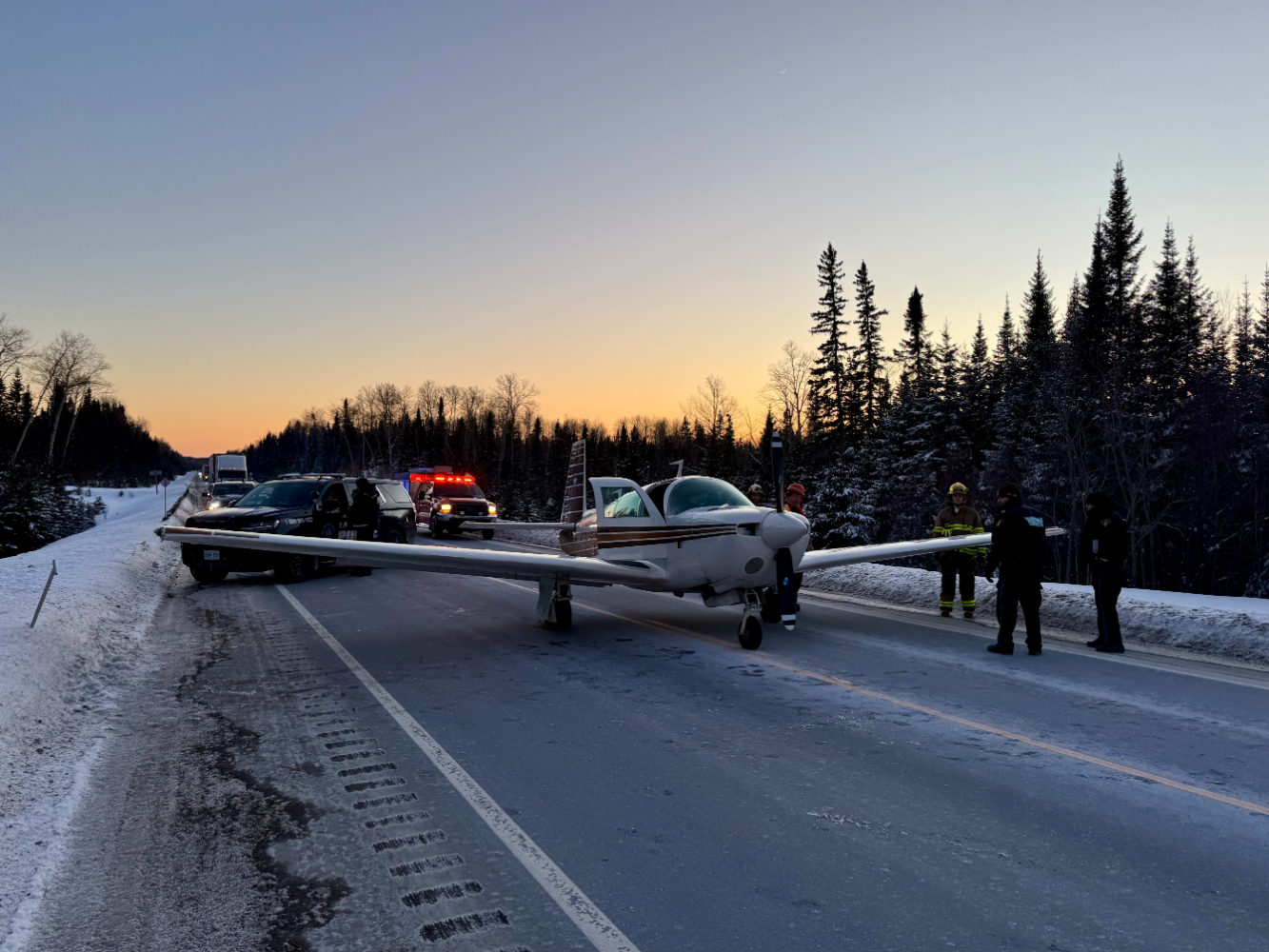

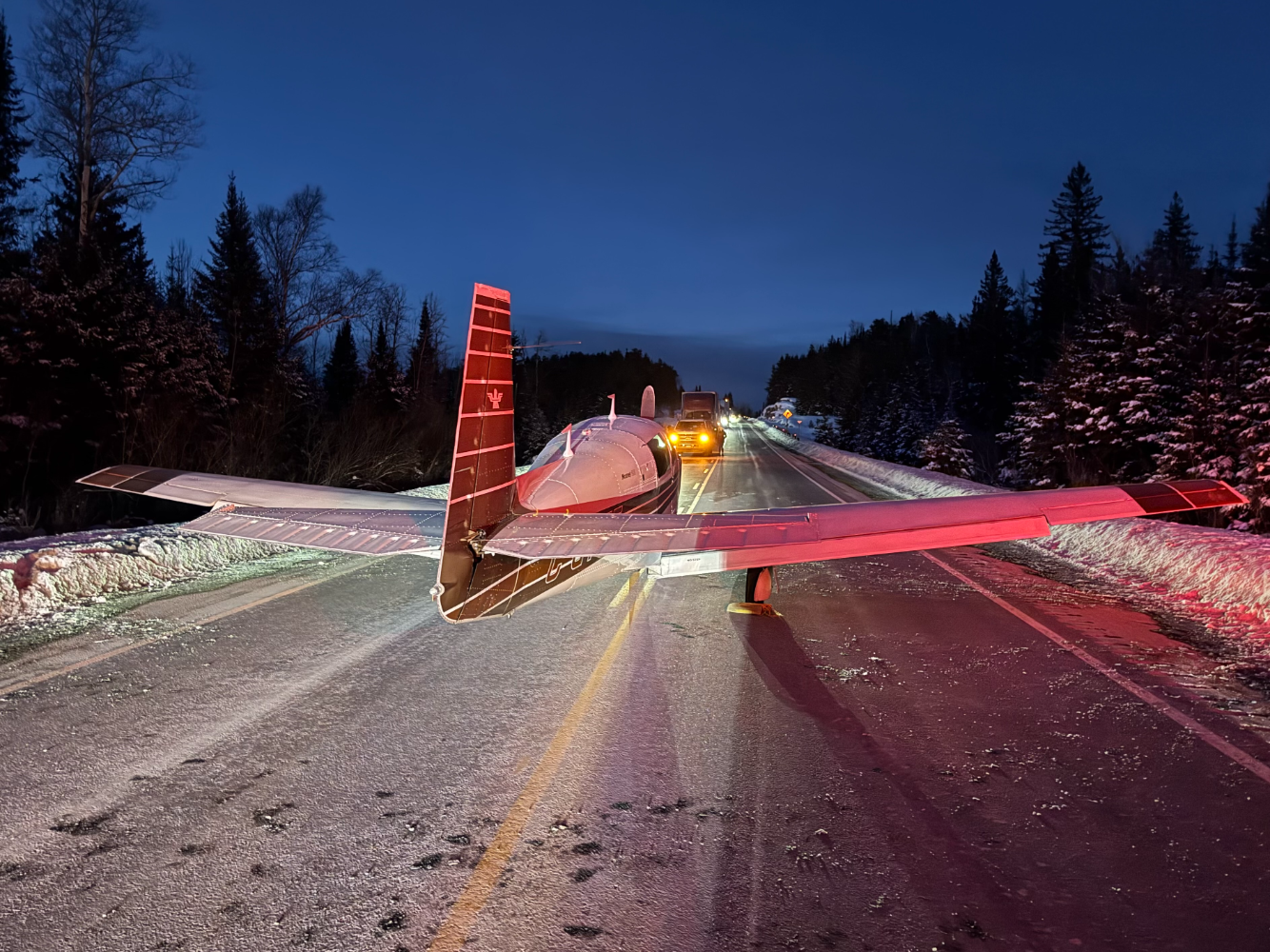


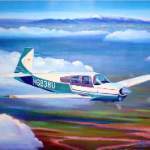
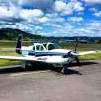
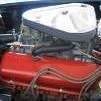








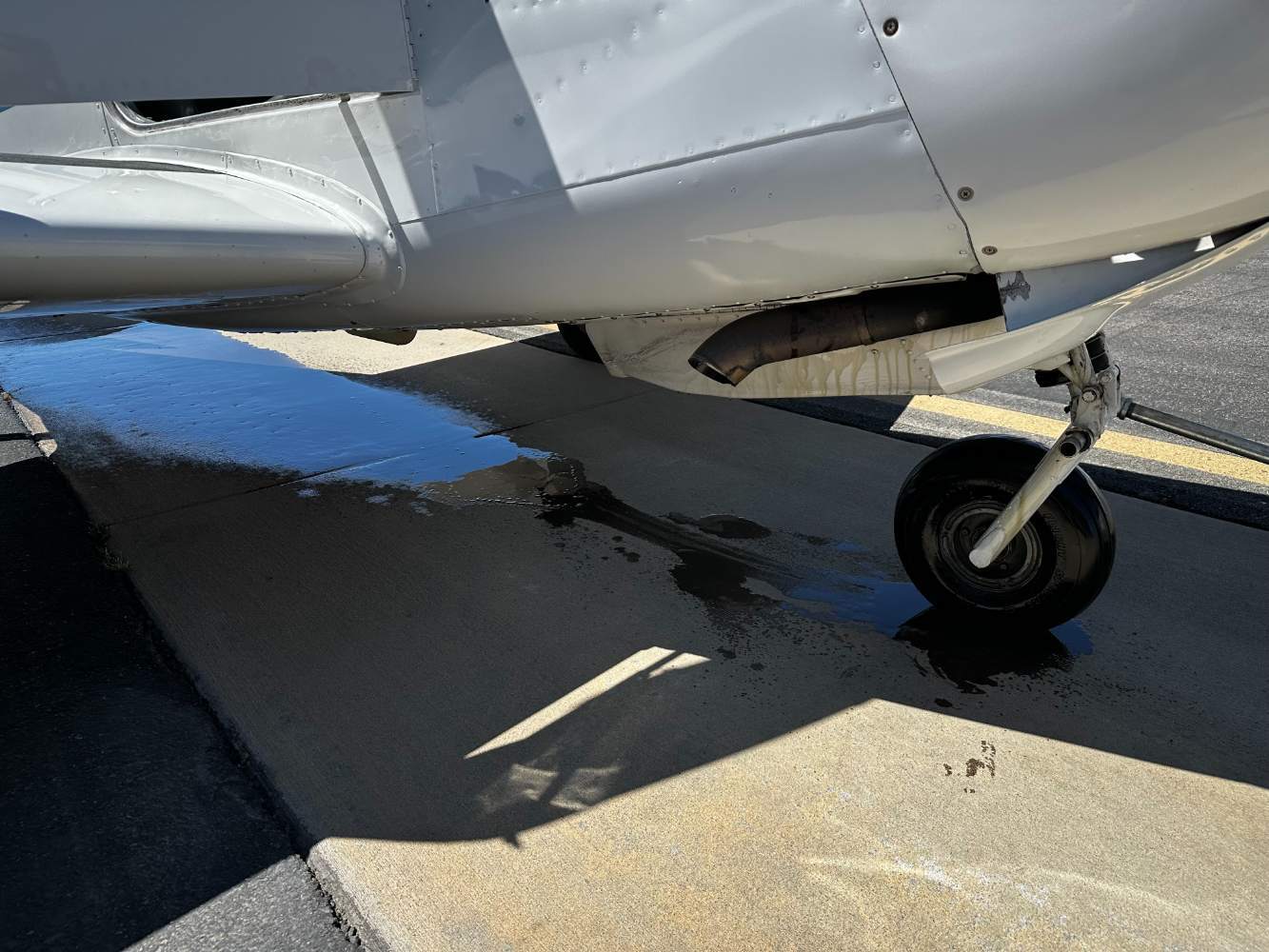




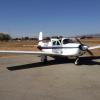
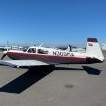

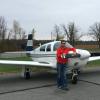
.thumb.jpg.9c7ab3f437612dd7b88c991933babff7.jpg)


